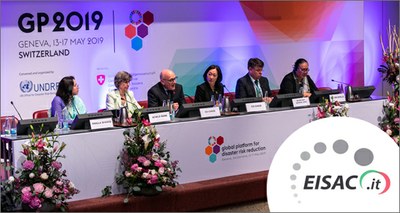Security: ONU office says the Italian EISAC emergency management centre is among the best worldwide
20/6/2019
The first centre in Europe for safety of strategic infrastructures, EISAC.it, was founded in Italy through teamwork between ENEA and INGV. It has been included by the pertaining UNO office in the list of the 24 best technological structures in the world for management of emergencies caused by natural events. Notice of this decision reached the International Forum of UNDRR (United Nations Office for Disaster Risk Reduction), which took place recently in Geneva, and during which the EISAC.it centre presented its technological solutions.
EISAC.it (European Infrastructure Simulation and Analysis Centre Italy) is the first of a number of interconnected centres that shall be set up in Europe in order to back up Civil Protection, public administration bodies and infrastructure managers in their efforts to safeguard critical networks. The aim is greater resilience for systems that provide the population with essential services such as electricity and water distribution, and transport and telecommunication, so that these systems function even in the wake of extreme natural events.
 Among EISAC.it’s advanced services on offer, we note analysis of the risks facing given geographic areas, simulations of natural event scenarios and of impacts of such events on networks (termed, stress testing), collection and analysis of satellite data and creation of territorial databases and of weather-climate and oceanographic forecasting systems. These complex activities require deployment of many experts and of leading-edge technologies such as the CIPCast platform[1] − ENEA’s ‘star attraction’ at the UNDRR forum in Geneva. This platform can provide risk analysis and forecasting services for strategic infrastructures throughout Italy.
Among EISAC.it’s advanced services on offer, we note analysis of the risks facing given geographic areas, simulations of natural event scenarios and of impacts of such events on networks (termed, stress testing), collection and analysis of satellite data and creation of territorial databases and of weather-climate and oceanographic forecasting systems. These complex activities require deployment of many experts and of leading-edge technologies such as the CIPCast platform[1] − ENEA’s ‘star attraction’ at the UNDRR forum in Geneva. This platform can provide risk analysis and forecasting services for strategic infrastructures throughout Italy.
“CIPCast is a new technology that ensures round-the-clock real-time monitoring of critical networks, uninterruptedly throughout the year. This enables constant assessment of the damage that extreme weather events, earthquakes, volcanic eruptions and landslides may cause, whether leading to power blackouts or interruption of essential services (e.g. at hospitals)”, explains Vittorio Rosato, head of ENEA’s critical infrastructure analysis and protection laboratory, and coordinator of EISAC.it.
Thanks to the use of leading-edge technologies and satellite images, CIPCast is also able to contribute effectively to post-event management, by facilitating cooperation between control rooms, operators and rescue teams thanks to data processing and provision of constantly updated data and information.
Rosato adds, “The need to improve the response capacity of strategic infrastructures to naturally occurring disasters − and to thus ensure provision of essential services under all circumstances − is one of the key concerns of the international Sendai Framework 2015-2030 agreement for the reduction of risks generated by extreme natural events. In terms of its importance, the Framework may be compared to the Paris climate agreement”. He concludes, “The acknowledgment of the work put in by EISAC.it, and received at the Global Platform for Disaster Reduction 2019, can only spur us on, to work toward an increasingly international approach, especially considering the fact that critical infrastructures are highly connected, vulnerable, and transnational systems, not to mention consideration of this forum’s results during the next United Nations climate summit in September”.
[1] CIPcast: Critical Infrastructure Protection risk analysis and foreCAST
